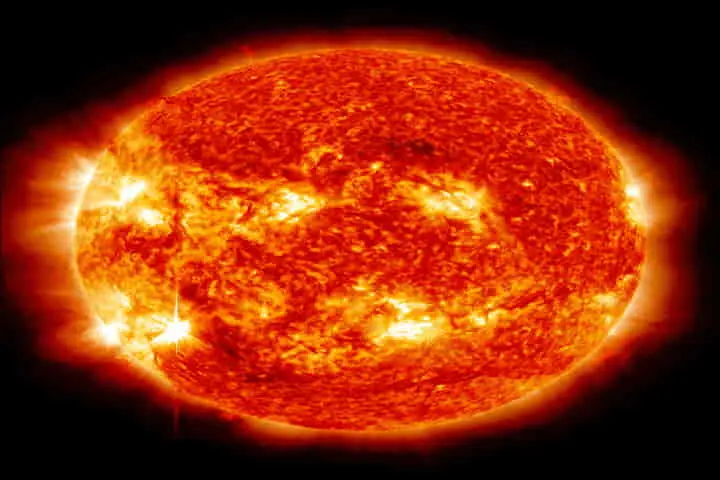Everything must have a beginning as it must have an end. While all the life and activities around it on the planet revolve around the Sun, there is no doubt that one day our star will burn out. The big question is when?
According to a report in livescience.com, even though the end of this medium-size star is trillion years away, its present phase which is called its “main sequence” will cease nearly five billion years from now. In the “main sequence” phase, the sun’s nuclear fusion of hydrogen is allowing it to radiate energy and also providing it with enough pressure to keep it from collapsing under its own mass.
Sharing details on this aspect, Paola Testa who is an astrophysicist at the Center for Astrophysics, said: “The sun is a little less than 5 billion years old. It's a kind of middle-age star, in the sense that its life is going to be of the order of 10 billion years or so."
The Center for Astrophysics, is a collaboration between the Smithsonian Astrophysical Observatory and Harvard College Observatory.
Having exhausted nearly all of its hydrogen, the sun will move to the next stage which is that of a red giant and this will take place roughly five billion years in the future. At this point the star will cease to generate heat through nuclear fusion and the core of this celestial body will contract and become unstable as per National Aeronautics and Space Administration.
While this happens in the core, in its outer part – which will still contain hydrogen — will expand, becoming red as it cools. This will not spell well for the sun’s immediate neighbouring planets – Mercury and Venus – as they will be slowly swallowed up while the increased sun’s solar winds will strip off Earth’s atmosphere and put an end to its vital magnetic field.
It will of course be catastrophic for life on Earth or whatever remains at that point considering that our lonely planet would have to face and survive a 10 per cent increase in Sun’s brightness which is sure to vaporise its oceans in one to 1.5 billion years, as per a study published in 2014 in Geophysical Research Letters. In a study published in the Monthly Notices of the Royal Astronomical Society in 2008, following this expansion in the beginning, the star will also devour the rocky remains of the Earth.
Also read: How Climate Change forced Fearsome Vikings to quit Greenland
After this phase, the joining of the helium which is left from fusion of hydrogen, into oxygen and carbon will take place before the Sun reaches that stage of collapse to its core. What will be left is a beautiful planetary nebula, which will be a bright shell of leftover hot plasma, in the star’s outer layers. Meanwhile, it will reduce to an extremely dense and very hot stellar corpse known as a white dwarf which will be the size of Earth. As per Testa, the nebula can be seen for 10,000 years only and from then on the Sun will start cooling off for trillions of years before it turns into a non-emitting object.
The scientists arrived at this timeline of the Sun and stars of its relative mass by knowing how they emitted energy. This was tough before taking into account the nuclear fusion in solar masses.
Sharing her views on this, Testa remarked: "A lot of the science is relatively new, like in the last century, because an integral part of understanding how a star works comes from understanding nuclear reactions and fusion. Before the 1930s, one of the main ideas of how stars worked was that energy was coming just from gravitational energy."
Incidentally, Testa researches the heating mechanisms and processes of X-ray emissions, such as solar flares, in the outer layers of the sun's atmosphere.
Also read: Brain surgeons and rocket scientists not smarter than others – study
It is only after better perception of fusion, the astrophysicists and astronomers were able to arrive at more complete models, coupled with data on emission observed from several stars, for the lives of stars.
Giving her views on this, Testa told Live Science: "By putting together lots of different information from lots of different stars, astronomers and astrophysicists could build a model for how stars evolve. This gives us a rather precise guess of how old the sun is."
The age pegged around 4.6 billion to 4.7 billion years old is validated by the radioactive dating of the oldest known meteorites, which formed from the same solar nebula. This nebula, which was a swirling disk of dust and gas, led to the creation of the solar system’s sun and planetary bodies.
It is advancement in tools such as these that help scientists and researchers to know when the light of the life-giver of the planet will burn out and finally fade away.




















